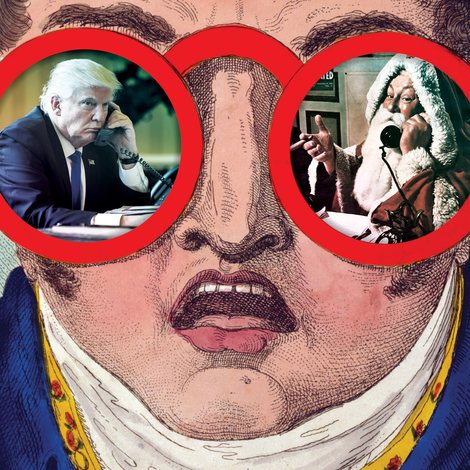In recent years, a feminist reckoning with the misogyny of the ancient-Greek world has taken root in the literary sphere. Fictionalized retellings of classical Greek myths such as Circe, by Madeline Miller, Atalanta, by Jennifer Saint, Clytemnestra, by Costanza Casati, and The Silence of the Girls, by Pat Barker, have repositioned the one-dimensional, victimized, and villainized women of the familiar epics as main characters with rich personalities and complex motivations.
Emily Hauser, herself the author of For the Most Beautiful, a 2016 novel told from the perspective of two female characters from the Iliad, has now published a nonfiction book, Penelope’s Bones: A New History of Homer’s World Through the Women Written Out of It. In it, she investigates the lives of the real women who lived during the Bronze Age, the period during which Homer’s Iliad and Odyssey are set.
Hauser, a senior lecturer in classics and ancient history at the University of Exeter, introduces Penelope’s Bones with a reflection on an opening passage of the Odyssey, in which Telemachus, the son of Odysseus, essentially commands his mother, Penelope, to shut up and go back to her loom. “One of the most famous of all ancient texts, telling one of the most famous ancient legends, begins with something of a mission statement: that women aren’t meant to talk,” Hauser writes.
Her mission statement, reinforced with each chapter, is the opposite: to give Homer’s women—and the real-life, historical women of the era whom they represented—a voice. To do this, Hauser blends close textual readings with a range of supporting evidence, including A.I. reconstruction, bio-archaeological discoveries, and DNA analysis.
Her commentary on the discrimination toward, and erasure of, women is not limited to the Bronze Age; she similarly unpacks the biases of the historians, politicians, archaeologists, poets, artists, and authors who have shaped the narratives around Homer’s world in the thousands of years since—narratives still taught in school today.
Hauser opens chapters with vivid portraits of archaeological digs or breakthrough moments of scholarship that have contributed to our contemporary understanding of Bronze Age Greece.
One clay tablet from around 1200 B.C.E. reveals details about the daily lives of enslaved women—the type of labor they engaged in, the food they ate and in what quantity, and the people they were surrounded by. In Crete, broken clay figurines left thousands of years ago in a cave are theorized to be “three-dimensional prayers,” left behind by women for Eileithyia, the Greek goddess of childbirth. Among the 3,500-year-old paintings found in homes in Akrotiri, Greece, a portrait of a young girl with a close-shaved head carrying incense offers a visual look into the life of a child during the Bronze Age.
Next, Hauser dives into the Iliad via the character of Briseis, a Trojan woman enslaved by Achilles, as a reward for his conquest of a town near Troy, who is promptly stolen by Agamemnon. She also investigates the infamous femme fatale Helen of Troy, a character who, time and time again, has been cast by male poets, playwrights, and authors as nothing but “a body to blame for war.” Another young woman from the Iliad, Chryseis, is also captured by Agamemnon. Her task is “not to speak, but to spark the conflict between men through the value they place on her — either as her father’s possession, or as her captor’s.” As Hauser puts it, “The gleaming epic of heroes like Achilles is, when you flip the coin to its grittier side, powered by the oppression of women.”
In one arresting chapter, Hauser uses Homer’s portrayal of mothers and his reference to “the agony” of childbirth in the Iliad to explore the prevalence of maternal mortality among the Mycenaeans.
Piecing together evidence from clay tablets, dental records, and skeletal remains, Hauser paints a dire portrait of the lives of Mycenaean women, who faced severe nutritional deficiencies that often led to anemia and osteoporosis. These conditions exacerbated the fragility of their already vulnerable bodies when they gave birth, often as teenagers. (By comparison, men appeared to receive more food and had more opportunities to consume animal protein at traditional feasts.)
In one thread that unearths layers of historical bias, Hauser explains that, for many years, researchers used the objects found around buried skeletons to assume their gender; jewelry meant the bones were female, and swords meant they belonged to a male. Because of these stereotypes, hundreds of female warriors buried in various sites around the Black Sea and across the Eurasian Steppe were ignored until recently.
Advances in DNA and bio-archaeological techniques have allowed researchers to re-assess skeletons through a more scientific method. In two burial sites in modern Bulgaria and Romania, which were long assumed to contain the remains of warrior chieftains and their wives, skeletal analysis in 2010 revealed that all the warriors were actually women, buried with their weapons and horses. This is but one of numerous such revelations; in one area around the Black Sea, it’s now estimated that one-fifth of all fourth- and fifth-century-B.C.E. graves with weapons actually belong to women.
Hauser’s own frustration with historical misinterpretations and assumptions is palpable. “How many other ways were there of being a woman in the Late Bronze Age than we’ve always been told?” she asks.
Luckily for readers, Hauser has done the extensive, midnight-oil-burning work to answer the question for us.
Valeriya Safronova is a New York–based writer

